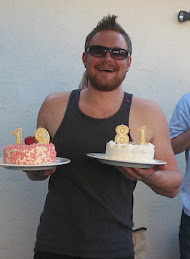Awhile back on here I was all gung ho about writing a book about poker. I started off with preflop and was going to write baout the game street by street. I obviouskly didnt get too far and for good reason. There is no set way to play poker. Any style can win. The CR style which I utilize is optimal for me and many others yet many variations exist. A common theme or rather question I see on forums is what should i be thinking about. Honestly I have struggled with this myself until lately. Of course I no where near have all the answers and on occasion catch myself reverting back to some less then optimal thinking while playing. That being said I feel like giving it a go.
To be honest it is very simple. We all run HUD or should be and from there we can loosely determine some form of preflop range for any villain whom we have data on. So before we take a flop we want to decide villains range based on his position and action taken. Ex: 20/17 TAG raises from UTG and calls BTN 3bet. We can assume a tight UTG opening range and based on villains aggression and stack sizes his most likely range for flatting a 3bet preflop is 99-JJ as well as AQs+. Of course again this is villain and read dependant but I think you can get an idea of what I mean. More common is fish limp called from MP, range=alot.
Next we take the flop if called and our percieved range for villain is typically large at this point. Now when the flop peels our 1st thought shouldnt be "yeah I hit" or "Fuck I bricked". We want to see how villain reacts to said flop. Does he donk, check? Now we take our range against his range and decide what our optimal line is. This is pretty 1st level shit imo but then again something I feel many overlook. The real meat and potatoes is after our flop decision. It is actually nearly impossible to go over all the different possible scenarios which can play out. Therefore I will try and simplify the thoguht porcess.
Villains preflop range will become more defined based on there flop action. From this action we can reassign a narrower range and from there decide how to best proceed. At all times our 1st thought shouldnt be our two cards but rather our villains range. From there we can then decide what is the best line for our hand. each street we have only 2-3 possible choices. If we can think of our opponents range deciding which action is best should be a no brainer.
EX: Villain is 22/20/4
Warning: Please dont play this bad!
Full Tilt Poker, $1/$2 NL Hold'em Cash Game, 5 Players
LeggoPoker.com Hand History Converter
Hero (BB): $265.55
UTG: $565.80
CO: $199
BTN: $214.60
SB: $98.90
Pre-Flop: Jc 7d dealt to Hero (BB)
2 folds, BTN raises to $7, SB folds, Hero raises to $24, BTN calls $17
I had no real history with villain and he had stats of a blind thief. I have been toying with 3betting light here with complete trash and I dont advise it. Villain calls. Now we assign a range. So TAG calls 3bet IP either a monster like QQ+ sometimes AQs+ or small PP and med SCs like 89+
Flop: ($49) 3h 2h Jd (2 Players)
Hero bets $28, BTN calls $28
Villains range either has us crushed or it doesnt and betting out should get us some good info as to where we are. He flats our cbet. Assign a range. QQ+ is out of question as those hands call pre to jam safe flops. AA is still slightly possible but not too likely. Therefore its either a weak made hand like 99 or TT looking to get to a cheap showdown or a float. A float being more likely imo due to our bet sizing.
Turn: ($105) 2s (2 Players)
Hero checks, BTN bets $65, Hero raises to $213.55 and is All-In, BTN folds
Not sure if my turn line is optimal but lets assign a range. What hand that villain has played to this point does he bet? It appears to me his whole range at this point is air. Small PPs check behind as well as draws so not to get CRAI. The only thing left are hands which have no real show down value unimporved. Calling and c/c the river could best maximize our EV but I think our shove could possibly fetch a hero call from TT.
Results: $235 Pot ($3 Rake)
Hero mucked Jc 7d and WON $232 (+$115 NET)
OK so not the best played hand but still one where we can see how ranges develop. This is an excercise we should be practicing in and out of hands. The next step after getting ranges handled is determining wether we should be pot controlling, tuning our hand into a bluff, or trying to get it in. Optimally we will always choose the line which is most EV.
Tuesday, February 5, 2008
Subscribe to:
Comments (Atom)
